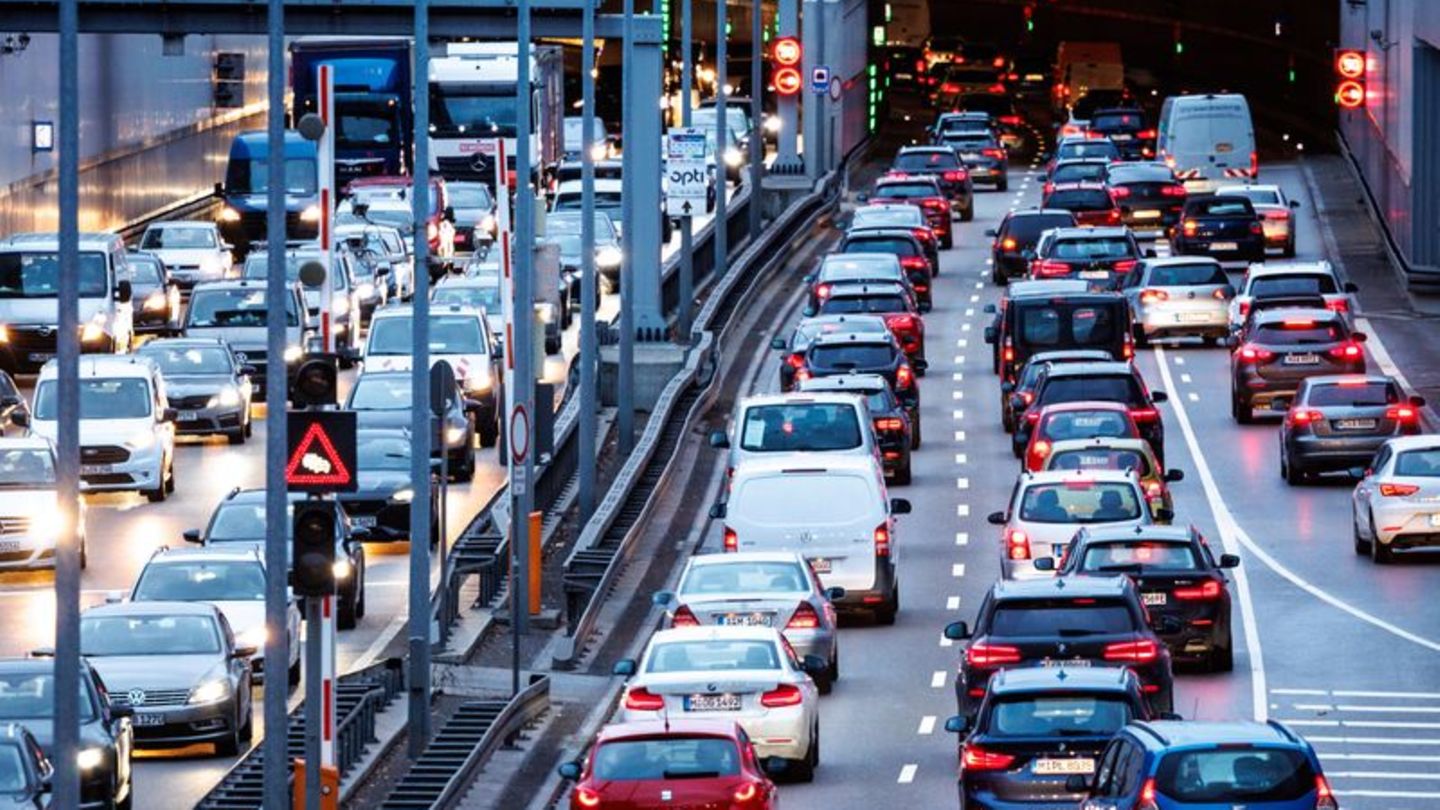Traffic jams cost a lot of time and money. Drivers in Berlin, Stuttgart and Munich are particularly affected. Traffic data analyst Inrix has done the math.
According to an analysis by the traffic data service provider Inrix, an average commuter in Germany spends 40 hours a year in traffic jams. If you calculate half the average hourly wage for the time lost alone, that costs 427 euros per driver. “Throughout Germany, traffic jams cost drivers 3.2 billion euros, an increase of 14 percent compared to 2022,” Inrix announced on Tuesday. In addition, there are higher fuel costs in stop-and-go traffic of a similar magnitude.
Berlin tops the list of cities in Germany plagued by traffic jams, as the traffic data analysts found. Drivers here spent an average of 55 hours in traffic jams in 2023, closely followed by Stuttgart (53 hours) and Munich (52 hours). In Cologne, commuters spent 50 hours in traffic jams or slow-moving traffic, in Düsseldorf 49 hours, and in Bremen and the Ruhr area 45 hours each. “Hamburg still does comparatively well with 43 hours, but here too, commuters in cars had to sacrifice more than an additional working week per year for the daily commute.” To calculate the time lost, Inrix compared the length of journeys at night on open roads with the times in rush hour traffic during the day.
An interesting development was seen in the number of trips to the city center. They fell sharply in the cities of Berlin, Hamburg, Munich and Cologne, as well as in Frankfurt am Main: “In Berlin, by as much as 17 percent and in Munich by 16 percent” compared to the previous year. At the same time, however, delays due to traffic jams or slow-moving traffic increased. “This indicates a gradual migration from city centers and a greater shift of traffic to the outskirts,” explained the traffic data evaluators. Morning commuter traffic has increased.
The most congested road section last year was on the A8 in Stuttgart-Ehningen. The Mittlerer Ring in Munich and the Elbe Tunnel in Hamburg are other congestion hotspots.
Worldwide, traffic increased again in 2023. In order to better manage the growing traffic in inner cities, many people see Paris as a model, where cycling is specifically promoted in the center, said traffic analyst Bob Pishue. “Other models are the ‘Germany Ticket’ and the city toll program in London, the success of which is being watched with interest.” In Germany, local trains, trams and buses are being used significantly more compared to 2022.
Source: Stern




